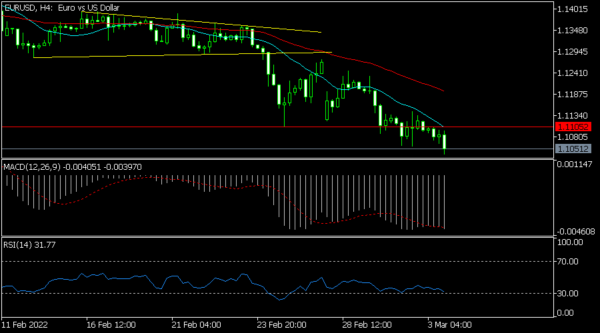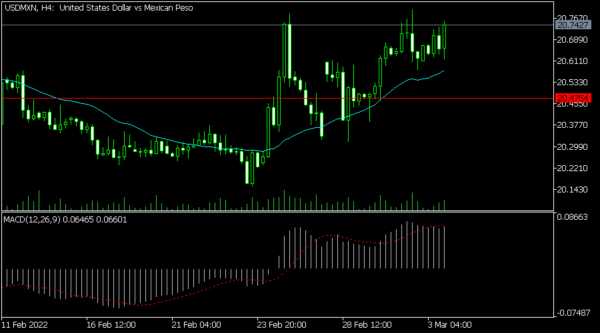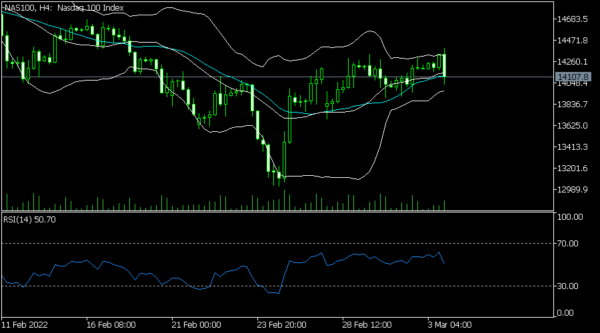US equities retreated on Friday as concerns over the Russian invasion of Ukraine continued. On Thursday, several rating agencies like Fitch and Moody’s downgraded the Russian economy and warned that the country could miss an upcoming debt payment. At the same time, many companies like Mercedes Benz, Nike, and BP announced that they will pause offering services in Russia. The EU and American government are also boosting their sanctions on the country, pushing its currency to a record low. The Dow Jones declined by 153 points while the Nasdaq 100 fell by 190 points.
The euro dropped to the lowest point since June 2020 as concerns about the impact of the current war to the European economy. The bloc will be hit by the rising gas and oil prices. Wholesale gas prices in Europe have risen to an all-time high while oil prices have risen to their highest level in more than a decade. Therefore, the main risk to Europe is stagflation, a situation where high inflation is accompanied by low economic growth. On Friday, Germany will publish the latest trade numbers.
The key economic numbers to watch on Friday will be jobs data from the US and Canada. Analysts expect the data will show that the economy added 400k jobs in February after it added 467k jobs. At the same time, they believe that the unemployment rate dropped to 3.9% while average wages rose by 5.8%. Just this week, Target announced that it will add its minimum wage to about $24 per hour. Canada will also publish its jobs and PMI numbers. Analysts believe that the economy returned to growth in February after it lost thousands of jobs in January.
EURUSD
The EURUSD downward trend continued Friday morning as worries about the European economy continued. The pair is trading at 1.1047, which is the lowest it has been since 2020. On the four-hour chart, the pair has moved below all moving averages while the MACD and the Relative Strength Index have all dropped. Therefore, the downward trend will continue if the pair is below the 25-day and 50-day moving averages.
USDMXN
The USDMXN pair rose as the Fed chair hinted that the bank would stick to its plan to hike interest rates this month. The pair rose to a high of 20.75, which was the highest level since March 2. It moved above the 25-day moving average and is approaching the key resistance level at 20.80. The MACD has also moved above the neutral line. Therefore, the pair will likely keep rising in the near term.
NAS100
The Nasdaq 100 index dropped sharply on Thursday as worries about the economy and the Fed remained. The stock is trading at $14,100, which was lower than this week’s high of $14,400. On the four-hour chart, it is along the middle line of the Bollinger Bands while the Relative Strength Index has also tilted lower. The index will likely keep falling as the bear market continues.

















